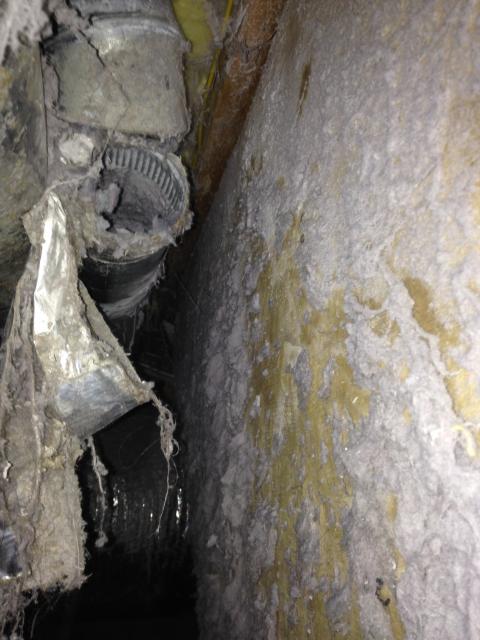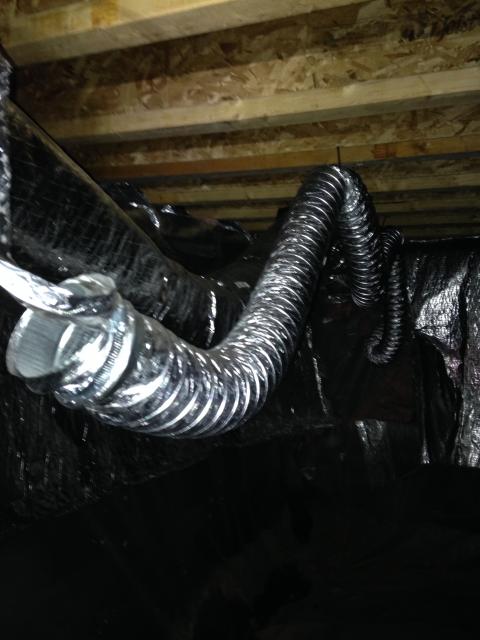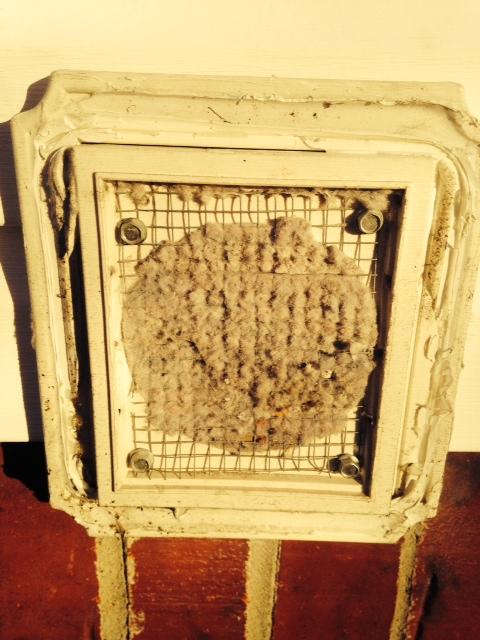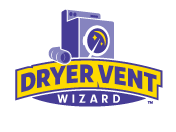Some people love to do laundry. Others would rather do anything but laundry. But for most people, laundry is simply one of those chores we’ve accepted as a fact of life. Clothes need to be cleaned.
Since doing laundry is a regular chore that needs to be done, making it as efficient and safe as possible would seem to be a common priority for everyone with a clothes washer and dryer in their home, condo, or apartment.
When it comes to getting clean clothes dried, the gas or electric dryer is the primary means of doing so, especially during colder months and during inclement weather. No one wants to hang their clothes outside when it’s cold or rainy. So while your dryer plays a primary function in getting clothes dry, the unseen hero of the equation is the home’s dryer vent, which carries warm, moist air and lint away from the clothes and to the outside of the house.
As a Dryer Vent Wizard, I’ve seen many examples of what people use as their dryer “vent”. Here are the top three most common mistakes I’ve seen in venting clothes dryers in peoples’ houses, and some ways to correct these venting issues for the efficiency of the drying process, and for the safety of those living in the home:
1) Vents directed inside the home.
People often assume that just because the back of their dryer is attached by a shiny silver hose, their dryer’s moisture and lint is being directed outside the house. But unless you can identify an active vent outlet cover on the outside of your home, I wouldn’t be so sure.
Vent covers can typically be seen on a home’s outside walls at either the first or second floor level, or on the roof, if the dryer is vented through an attic space. If you’re not sure where your vent is located outside your home, it could be that it is hidden from view behind shrubbery or under a deck. These locations are all fine, but just make sure you can positively identify a vent outlet cover outside the home, and that air moves through it when the dryer is operating .
If you don’t see the cover, you may discover that your vent terminates inside your home, either directly into the crawl space, between a wall cavity, into the attic, or directed towards an eave in the attic.
These are all bad locations to deposit your lint and all that warm, moist air. Over time the moisture can help produce a breeding ground for dangerous mold, causing respiratory illness and other complications. The accumulating lint and dust can cause breathing problems, sneezing, coughing, and allergic reactions to those who are sensitive to those things. The lint can also be a fire hazard, as lint is extremely flammable.
These are a few reasons why building codes require that dryers be vented to the outside of the building.
2) Incorrect materials used for the dryer vent.
It wasn’t too long ago when builders positioned most laundry rooms to the outside wall of the home. This made venting very simple—the vent was simply a short run from the dryer to the outside wall.
Modern construction places laundry rooms where it is most convenient for the family which is usually upstairs near the bedrooms or downstairs in a central location on the interior of the house. This central positioning of the laundry room now requires lengthy ventilation systems to be constructed in order to get the lint and moisture outside of the home.
Builders would often cut expenses by using economical vinyl or flexible hoses to create a connection between the laundry room and vent outlet.
The problem with this misapplication of building materials is that neither vinyl nor silver colored hose (most silver hose is not actually metal, but rather silver colored paper or mylar-type plastic) can contain a fire that might start in the dryer. Both materials will easily burn and immediately contribute to a fire emergency.
It’s also very difficult to keep these hoses straight, allowing the airflow to continue unimpeded. Every dip and valley in a suspended hose is just one more opportunity for lint and moisture to collect, shutting off the dryers airflow, extending drying times (wasting energy) and increasing the likelihood of a dryer fire (lint backing up into the dryer body).
For the most efficient and safest clothes drying, vents should be constructed of 4-inch diameter metal pipe with a smooth interior. Aluminum and galvanized steel pipe are the most common examples.
3) Screens covering the vent cover.
What seems to be a sensible solution to a very common problem actually can result in major clothes drying issues for the homeowner.
Birds often look at dryer vents as perfect locations to build their nests. I’ve seen these nests get as long as 6-9 feet inside the dryer vent line. These nests can easily shut down the airflow, drastically increasing drying times and wasting money through excess energy costs.
Plus, the clogged vent can also contribute to the same fire hazards as mentioned earlier. Nests also produce a musty, unpleasant smell that backs up into the laundry room, and the resulting fecal matter inside the vent and on the outside wall is…well, let’s just say it’s unpleasant.
With all of these issues, no wonder people are willing to try anything to keep birds from nesting in their vents. Placing a screen with hardware cloth or wire over the vent, or buying a vent with a plastic screen already in place, all seem to be sensible solutions to the problem.
The issue is, the same screen that keeps birds out also traps lint in, creating what I fondly refer to as a “lint biscuit.” This wad of lint can easily get to be 2-3 inches thick, completely shutting off the vent, causing the same safety and efficiency issues the home owner is trying to avoid in the first place.
A word of caution to the homeowner: just because you can buy it in the store doesn’t mean it’s appropriate to put on your house! There are manufacturers who make vent covers with screens already installed, but don’t be tempted to use them on your dryer vent. Dryer Vent Wizard uses a variety of effective and tested pest-resistant covers that meet code and prevent nuisance pests from making your home their home.
Conclusion: Laundry…you’re not going to get around it in our modern age. It’s here to stay. But by paying attention to a few key problem areas, you can make your clothes drying experience both efficient and safe.
Dryer Vent Wizard specializes in the installation, repair, and cleaning of dryer vents in peoples’ homes and businesses that use dryers. If you feel you have one of these problems and would like professional help in the solution, give us a call at (615) 984-3000 or (866) 498-SAFE (7233).




